
USS Freedom (ID-3024) was a cargo and transport ship in the United States Navy during World War I. Originally SS Wittekind for the North German Lloyd line, the ship also served as USAT Iroquois and USAT Freedom after being seized by the United States in 1917.
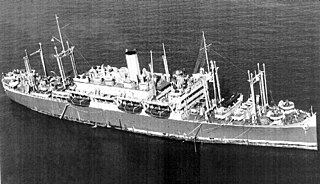
SS President Cleveland was originally built as Golden State for the United States Shipping Board (USSB), one of the planned World War I troop transports converted before construction into passenger and cargo vessels launched as Emergency Fleet Corporation Design 1029 ships first known, along with the smaller Design 1095 versions, in the trade as "State" ships due to names assigned for the nicknames of states and later as "535s" for their length overall. Almost all ships of both designs were renamed for United States presidents by May 1921, with Golden State being renamed President Cleveland. As one of the USSB-owned ships operated by agents of the board, President Cleveland was allocated to and operated by the Pacific Mail Steamship Company until sold by the USSB to the Dollar Steamship Line in 1925. After the demise of that line and creation of a new, replacement line, American President Lines, the ship remained with that line until government acquisition for the Second World War.

The SS Empire Miniver was a British steam merchant ship. She was originally an American merchant, launched in 1918 as SS West Cobalt. During a brief stint in the United States Navy in 1919, she was known as USS West Cobalt (ID-3836).
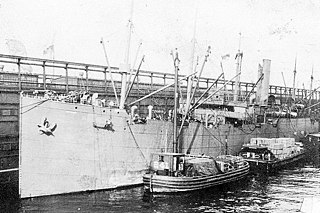
Empire Bittern was a steamship, built as a livestock-carrying cargo ship in 1902 at Belfast, Ireland as Iowa for the White Diamond Steamship Company Ltd of Liverpool. The ship was sold to the Hamburg Amerika Linie and renamed Bohemia in 1913.
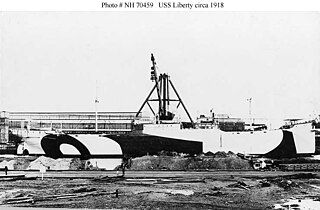
USAT Liberty was a United States Army cargo ship torpedoed by Japanese submarine I-166 in January 1942 and beached on the island of Bali, Indonesia. She had been built as a Design 1037 ship for the United States Shipping Board in World War I and had served in the United States Navy in that war as animal transport USS Liberty (ID-3461). She was also notable as the first ship constructed at Federal Shipbuilding, Kearny, New Jersey. In 1963 a volcanic eruption moved the ship off the beach, and Liberty's wreck is now a popular dive site.

USS West Apaum (ID-3221) was a cargo ship in the United States Navy during World War I. She had been built as SS West Apaum for the United States Shipping Board (USSB) as part of the West boats, a series of steel-hulled cargo ships built on the West Coast of the United States.

SS Black Osprey was a cargo ship for the American Diamond Lines and the British Cairn Line. She was formerly known as SS West Arrow when she was launched for the United States Shipping Board (USSB) during World War I. The ship was inspected by the United States Navy for possible use as USS West Arrow (ID-2585) but was neither taken into the Navy nor ever commissioned under that name.
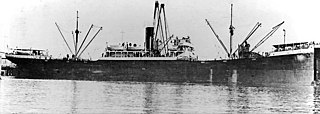
USS West Carnifax (ID-3812) was a cargo ship in the United States Navy shortly after World War I. After she was decommissioned from the Navy, the ship was known as SS West Carnifax, SS Exford, and SS Pan Royal in civilian service under American registry.
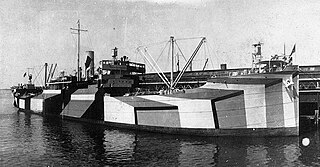
SS West Cheswald was a cargo ship for the United States Shipping Board (USSB) launched shortly after the end of World War I. The ship was inspected by the United States Navy for possible use as USS West Cheswald (ID-4199) but was neither taken into the Navy nor ever commissioned under that name. West Cheswald was built in 1919 for the USSB, as a part of the West boats, a series of steel-hulled cargo ships built on the West Coast of the United States for the World War I war effort, and was the 32nd ship built at Northwest Steel in Portland, Oregon.

SS West Nohno was a cargo ship of the United States Shipping Board (USSB) launched shortly after the end of World War I. The ship was inspected by the United States Navy for possible use as USS West Nohno (ID-4029) but was neither taken into the Navy nor ever commissioned under that name.
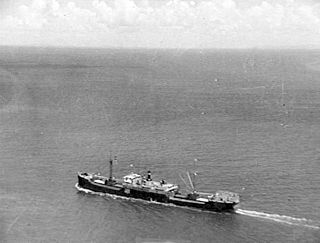
MS West Honaker was a diesel-powered cargo ship of the United States Maritime Commission (USMC) that was part of the "Corncob Fleet" of old ships sunk as part of the "gooseberry" breakwater off Utah Beach during the Normandy invasion. The ship was originally built as SS West Honaker, a steam-powered cargo ship built for the United States Shipping Board (USSB), a predecessor of the USMC. At the time of her completion in 1920, the ship was inspected by the United States Navy for possible use as USS West Honaker (ID-4455) but was neither taken into the Navy nor ever commissioned under that name.

MS West Grama, sometimes spelled as West Gramma, was a diesel-powered cargo ship of the United States Maritime Commission (USMC) that was sunk as part of the "gooseberry" breakwater off Utah Beach during the Normandy invasion. Prior to her diesel conversion, she was known as SS West Grama. In 1919, she was briefly taken up by the United States Navy under the name USS West Grama (ID-3794).

West Compo was a steam cargo ship built in 1918–1919 by Northwest Steel Company of Portland for the United States Shipping Board as part of the wartime shipbuilding program of the Emergency Fleet Corporation (EFC) to restore the nation's Merchant Marine. The vessel was commissioned into the Naval Overseas Transportation Service (NOTS) of the United States Navy in January 1919 and after only one overseas trip was decommissioned four months later and returned to the USSB. Afterwards the vessel was largely employed on the Atlantic Coast of the United States to France route until mid-1921 when she was laid up and eventually broken up for scrap in 1936.
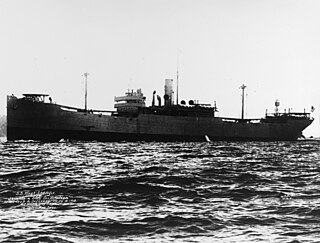
USS West Lianga (ID-2758) was a cargo ship for the United States Navy during World War I. She was later known as SS Helen Whittier and SS Kalani in civilian service under American registry, as SS Empire Cheetah under British registry, and as SS Hobbema under Dutch registry.

USS West Ekonk (ID-3313) was a cargo ship for the United States Navy during World War I. She was later known as SS West Ekonk in civilian service under American registry, and as SS Empire Wildebeeste under British registry.

SS Edenton was a steel-hulled cargo ship built in 1918 for the United States Shipping Board as part of the Board's World War I emergency shipbuilding program.
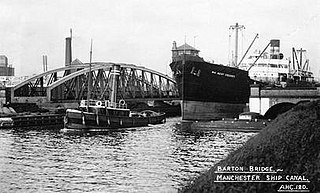
SS West Cressey was a steel-hulled cargo ship that saw a brief period of service as an auxiliary with the U.S. Navy in the aftermath of World War I.

USS West Elcasco (ID-3661) was a steel-hulled cargo ship which saw service as an auxiliary with the U.S. Navy in World War I and as an Army transport in World War II.
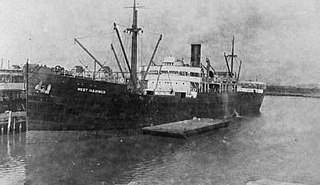
SS West Maximus was a steel-hulled freighter built for the United States Shipping Board's emergency wartime construction program during World War I. Completed too late to see service in the war, West Maximus spent the interwar years in commercial service.
Portmar was a United States-flagged merchant vessel that was constructed in response to World War I, operated by a succession of companies in the interwar period, then taken up for wartime shipping in World War II.


















